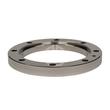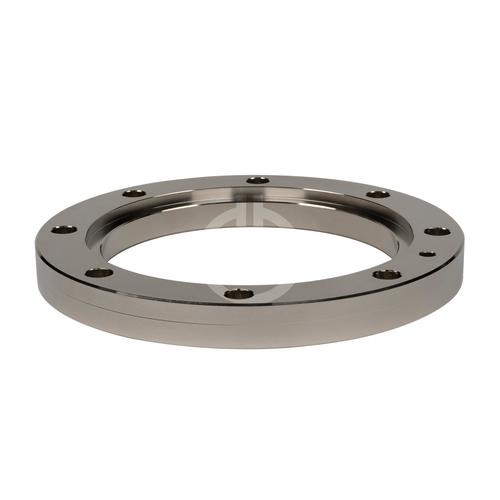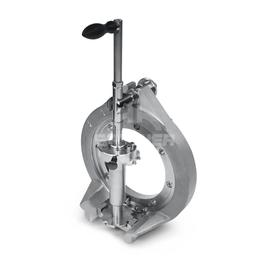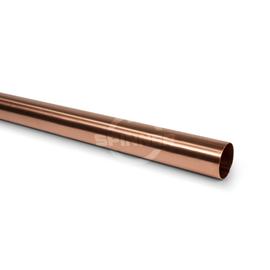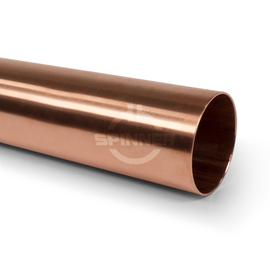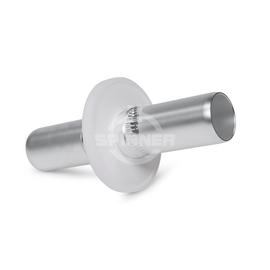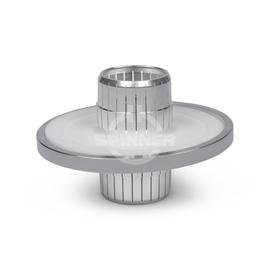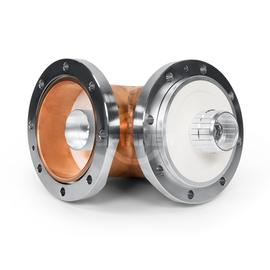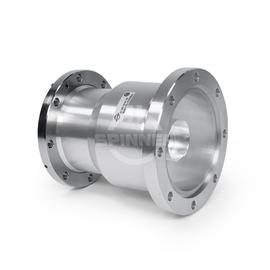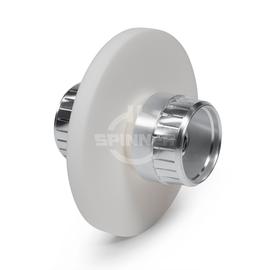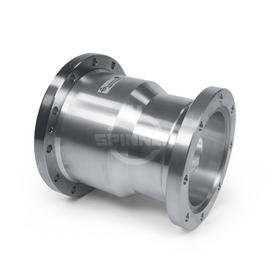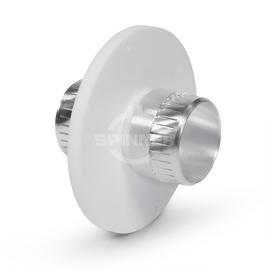SPINNER Rigid Coaxial Lines components - robust performance
A rigid coaxial transmission line is mainly used in broadcast systems to transmit radio frequency signals between transmitter and combiners as well as between combiners and the antenna. The advantage of rigid coaxial lines is that the radiation leakage and attenuation, especially at higher frequencies, is lower than with flexible coaxial cables. This means that greater power can be transmitted, and higher shielding attenuation can be achieved.
Outstanding RF characteristics, best possible passive intermodulation and VSWR
The Rigid line flange for 52-120 enables you to transmit high-frequency signals reliably and flawlessly with optimum protection of your sensitive equipment in a power range up to 142 kW @ 100 MHz (at +40 °C ambient temperature), 93 kW @ 230 MH (at +40 °C ambient temperature), 48 kW @ 860 MHz (at +40 °C ambient temperature) 1) with maximum passive intermodulation (IM3).
It supports the use of the following frequency bands : Band 1, Band 2, Band 3, Band 4/5
The positive characteristics are briefly summarised: outer conductor system copper / copper-alloy, easy assembly, SPINNER flaring tool BN 511400 with Insert BN 511445 available, PTFE insulation, for indoor application.
With the flaring technique system (BT) the outer conductor tube is flared by using a SPINNER flaring tool. The different components are connected together with coupling elements. The electrical contact at the outer conductor is done via a metallic ring which is mounted on periphery of the insulation disc of the coupling element. The very stable connection ensures a high RF tightness and repeatable electrical length. The BT flaring technique system is provided for indoor application and is designed to handle the maximum RF power up to 860 MHz. Please take into consideration that for rigid lines inner supports are necessary depending on the wanted line length. The inner supports prevent the inner conductor from sagging.
A rigid coaxial line flange will be fixed to the outer conductor tube by clamping, flaring or brazing for connecting two rigid line sections. The flange ensures the mechanical stability and electrical continuity of the connection and provides holes for stable fastening of two flanges to each other. The coupling elements for the inner conductor can be inserted in the open inner diameter.
